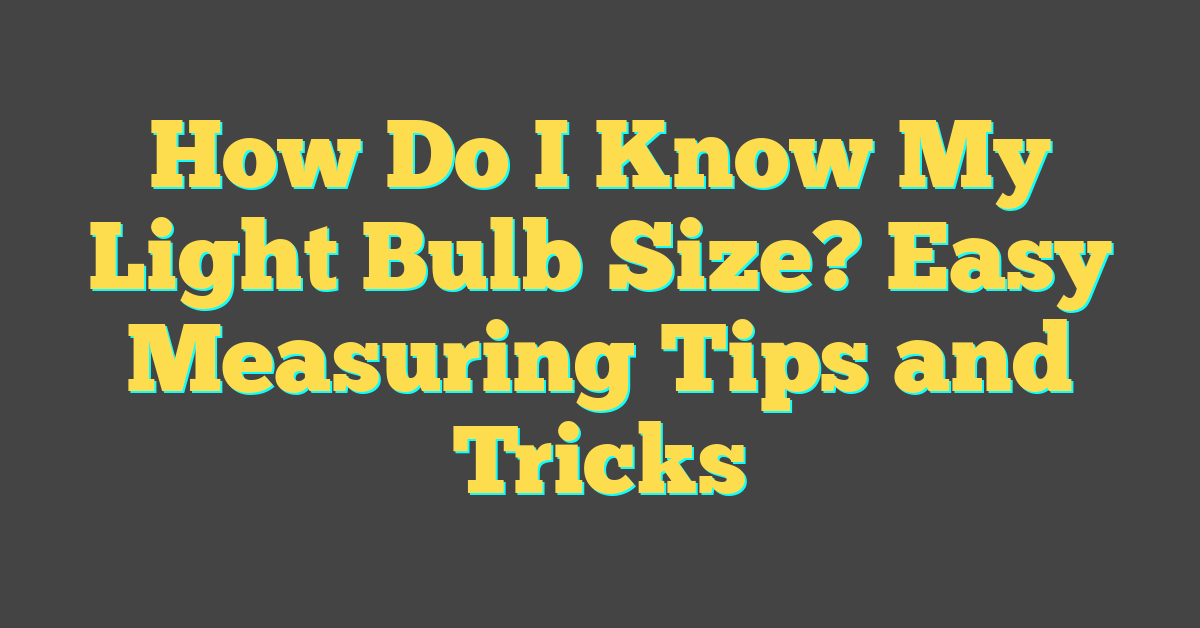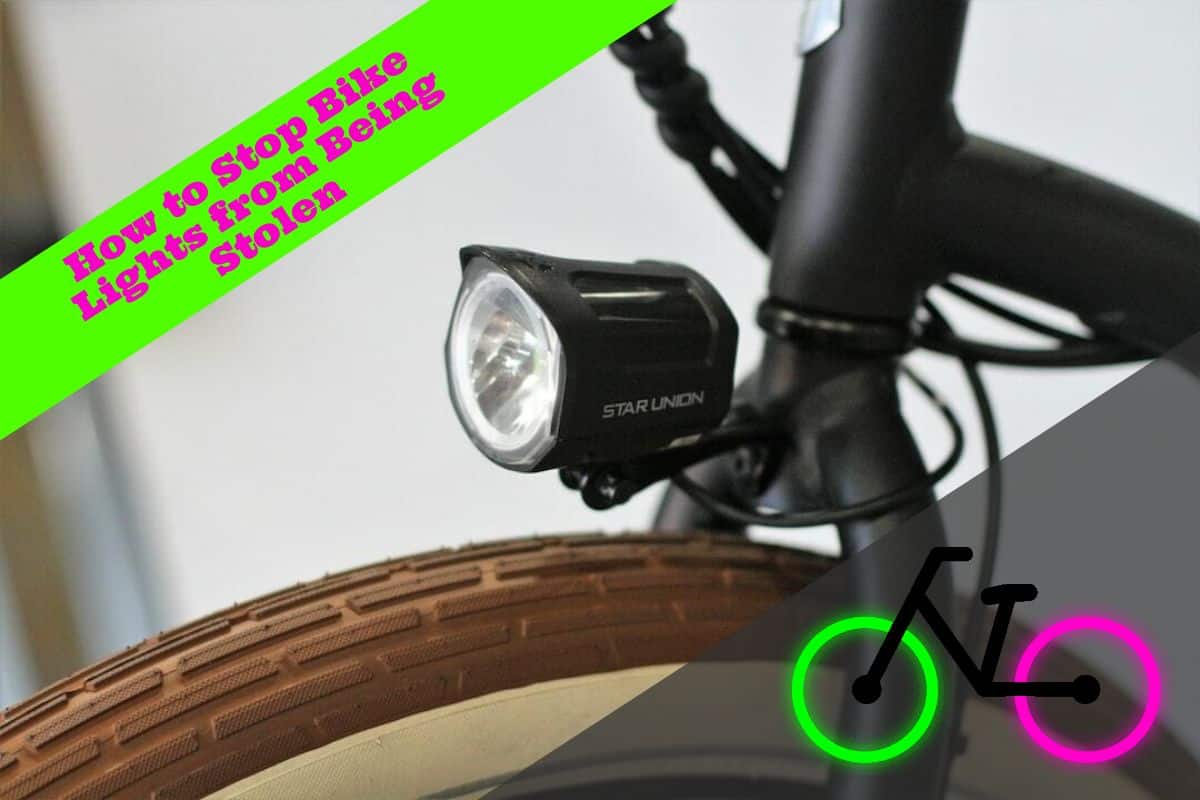Ever found yourself staring at the endless aisle of light bulbs at the store, feeling utterly lost? You’re not alone. Figuring out the right size for your light bulb can be tricky, but it’s crucial for ensuring it fits your lamp or fixture perfectly.

You might wonder if there’s a secret code to crack or if you need to bring your old bulb as a sample every time. Don’t worry, there’s a simpler way to find out what you need. Let’s shed some light on how to determine your bulb size without the guesswork.
Understanding Light Bulb Sizes
When you’re faced with the task of replacing a light bulb, knowing the right size is essential. It’s all about finding the perfect match for your lamp or fixture, ensuring it not only fits but also functions as it should. Here’s a breakdown to clear up the confusion.
Base Types Matter
First off, look at the base of your bulb. This is where it connects to the power source, and getting it wrong means the bulb won’t fit, no matter what. You’ve probably heard of the common screw base, also known as an E26 in the US, which fits most standard lamps. For smaller fixtures, you might need an E12, often referred to as a candelabra base.
Bulb Shape Codes
Next up, pay attention to the bulb’s shape. Manufacturers use a code that begins with a letter(s) representing the shape followed by a number indicating its diameter at the widest point, measured in eighths of an inch. For example, an A19 bulb is your typical household bulb where ‘A’ represents the shape, and ’19’ translates to 2 3/8 inches wide. Let’s look at some common shapes:
- A: Arbitrary or standard shape
- R: Reflector
- G: Globe
- T: Tubular
- B: Blunt tip (decorative)
Lumens Over Watts
Don’t forget brightness. In the past, we’d pick bulbs based on watts, equating higher watts to more brightness. Not anymore. Today’s LED technology focuses on lumens, the actual measurement of brightness a bulb provides. Here’s what you might consider when selecting lumens:
- 450 lumens: Comparable to a 40-watt bulb
- 800 lumens: Similar to a 60-watt bulb
- 1600 lumens: Roughly a 100-watt bulb
Finding The Perfect Fit
Armed with this knowledge, you’ll walk into any store with confidence. Remember, the key details are the base, the shape, and the brightness level. From chic chandeliers to simple desk lamps, understanding these aspects will guide you effortlessly toward the perfect light bulb for every fixture in your home. Keep this cheat sheet handy, and you’ll never be left in the dark when shopping for bulbs.
The Importance of Finding the Right Size

When you’re on the hunt for the perfect light bulb, finding the right size is more than a matter of fitting it into the socket. The right size bulb ensures optimal illumination and, believe it or not, can influence the ambiance of a room. The bulb size dictates not just how well it will fit into the fixture, but also how the light is distributed across the space.
Now consider the fixtures you have: some might be open with exposed bulbs, while others are concealed or part of a lamp with a shade. The wrong size bulb can look out of place in an open fixture or it might not even fit under a lampshade. This isn’t just a cosmetic issue—it affects the quality and amount of light.
Let’s talk about decorative fixtures. They often require specific shapes or sizes to maintain their design integrity. A globe bulb in a chandelier might just be what you need for that soft, diffused glow, whereas a candle-shaped bulb could be the solution for a cozy, welcoming atmosphere in a dining room.
You might be wondering about those hard-to-reach fixtures or enclosed outdoor lights. In these cases, size becomes a matter of convenience too. Choosing a bulb that lasts longer and fits easily within the fixture means less frequent replacements and a hassle-free maintenance experience.
Light doesn’t just brighten up a room; it sets the tone and mood. The right size bulb affects not only the intensity of light but also how it interacts with the color and texture of your walls and furnishings. A professional tip is to choose a size that not only illuminates but also complements your space.
Remember, selecting the right size light bulb isn’t just another item on your to-do list. It’s a key element in creating the ideal ambiance, ensuring ease of use, and enhancing the design of your living space. With the knowledge of bulb sizes and where they fit on your DIY belt, you’re well-equipped to tackle any lighting project around the house.
Different Types of Light Bulb Bases

« How Do Light Bulbs Explode? Understanding the Shocking Reasons
How Do Light Bulbs Produce CO2? Uncover the Shocking Truth »
As you embark on your DIY lighting project or simply need to replace a burned-out light bulb, it’s not just size that matters; the base type is equally essential. The base is the part of the bulb that screws or clips into the socket, and there’s a surprising variety to choose from.
Edison Screw Bases, named after Thomas Edison, are among the most common. They come in several sizes, which are usually indicated by a letter and number combination such as E26. Here, ‘E’ stands for Edison, and ’26’ refers to the diameter of the base in millimeters. In North America, E26 is your standard size, while in Europe, E27 is more prevalent.
The other widely used type is the Pin Base. Instead of screwing into a socket, these bulbs have two pins that plug into a matching socket. Pin bases are often seen in halogen and some LED lighting applications, and the spacing between the pins is crucial for a snug fit. There are many subtypes in this category, like the GU10, used frequently in track lighting.
Here’s a quick rundown of common base sizes you might encounter:
| Edison Screw (ES) Base | Pin Base |
|---|---|
| E12 (Candelabra) | GU10 (Track lights) |
| E17 (Intermediate) | G4 (Low-voltage lamps) |
| E26 (Medium or Standard) | GU24 (Twist-and-lock) |
| E39 (Mogul) | GX23 (Fluorescent pin base) |
It’s worth noting that some unusual bases exist, like bayonet mounts popular in the UK or specialty bases for vehicles and appliances. Remember, the wrong base type won’t only not fit, but attempting to force it could damage your fixture or the bulb itself.
For recessed lighting, the base type plays a pivotal role in the fixture’s design. It ensures a flush fit against ceilings or under cabinets, contributing to the sleek look of your light setup.
In outdoor and garden lighting, durability in base design is vital too. Specific base types are made to withstand moisture and temperature changes; hence, prior knowledge of what works best for outdoor conditions can save you from frequent replacements.
How to Measure Your Existing Light Bulb

When you need to replace a light bulb but you’re not sure about the size, measuring your existing bulb is the best way to ensure a perfect fit. Before you start, make sure you’ve turned off the power to avoid any hazards.
First, you’ll need to remove the bulb from its fixture. Once it’s out, carefully inspect it for any markings that may indicate its size. If you find the information, jot it down. However, if the markings have worn off or are not present, don’t worry—you can still determine the size manually with a ruler or measuring tape.
Start with the bulb’s diameter, which is the widest point of the bulb. Measure from one side to the other, crossing over the center. Bulb diameter is often measured in eighths of an inch, with each eighth represented by a number. For example, a bulb that is 2 inches (or 16 eighths) in diameter would have a size designation of T16.
Next, measure the length of the bulb from the bottom of the base to the top of the glass. Having both the length and diameter will guide you to the accurate size you need when shopping for a replacement.
In addition to the length and diameter, you’ll want to pay attention to the shape of the bulb. Common shapes include:
- Traditional A-series (A19 or A21)
- Bulged reflectors (BR30 or BR40)
- Candles (C7 or C11)
- Globes (G16.5 or G25)
Each shape has its unique benefits and applications, with some favoring ambient lighting and others directed focus.
Remember to note the type of base as well, since it’s crucial for compatibility with your fixture. Stay organized by keeping a record of your measurements; you might even snap a photo with your phone for reference when you head to the store or shop online. With these measurements in hand, you’re on track to finding the perfect match for your lighting needs.
Using Manufacturer’s Information

Sometimes the simplest solutions are right in front of you. If you’ve kept the packaging of your previous light bulb, you’re in luck. Manufacturers typically list the bulb size directly on the packaging, making it easy for you to know exactly what you’re looking for. But don’t worry if you’ve tossed out the package, as most bulbs have the size printed directly on them.
To start, check the bulb’s metal base. You’ll often find the size and type information etched or stamped here. Look for any combinations of letters and numbers; these are generally codes indicating the bulb’s dimensions and base type. For example, a code like ‘A19’ signifies an ‘A’ type bulb with a diameter of 19 eighths of an inch (which equates to 2 3/8 inches).
If the information isn’t on the base, take a peek at the side of the bulb. Some manufacturers print the size along the bulb’s body, near the base. Be sure to have good lighting and possibly a magnifying glass on hand as the print can be quite small.
Here’s a quick tip: Don’t solely rely on the wattage listed on the bulb for size guidance. Wattage is a measure of power consumption, not size. You’ll want to focus on the actual physical dimensions for the right fit.
When you’re out shopping, having noted down the manufacturer’s code makes finding a replacement much less stressful. Remember that light bulb sizes and bases are standardized; this means that once you’ve got the right code, you’ll be able to find a compatible bulb from almost any brand.
Leveraging the manufacturer’s information dramatically simplifies the process of finding a new bulb that fits just right. It’s one of those handy DIY shortcuts that can save you time when you’re knee-deep in home projects and eager to see your space beautifully lit without any hiccups.
Conclusion
You’ve got all the tricks up your sleeve now to ensure you never get stuck with the wrong light bulb size again. Remember to measure your existing bulb, check the base type, and look for those handy codes and markings. Armed with the right information, you’ll breeze through the aisles or click through online stores with confidence. Happy lighting!
Frequently Asked Questions
How do I determine the correct size when replacing a light bulb?
To ensure a perfect fit when replacing a light bulb, measure the existing bulb’s dimensions or use the manufacturer’s information from the packaging or the bulb itself. Focus on the physical size, not the wattage.
What should I look for on the bulb to find its size and base type?
Check the metal base or body of the bulb for codes and markings that indicate its dimensions and base type. These identifiers help you select a bulb that will fit your fixture.
Is wattage important when selecting a replacement light bulb?
Wattage is about energy consumption and light output, not fit. For replacing a bulb, prioritize finding the right physical dimensions over wattage to ensure compatibility with your fixture.
Can using the manufacturer’s code help when shopping for a new light bulb?
Yes, having the manufacturer’s code when shopping for a new bulb simplifies the process as it ensures compatibility with your fixture across different brands and saves time during home projects.




